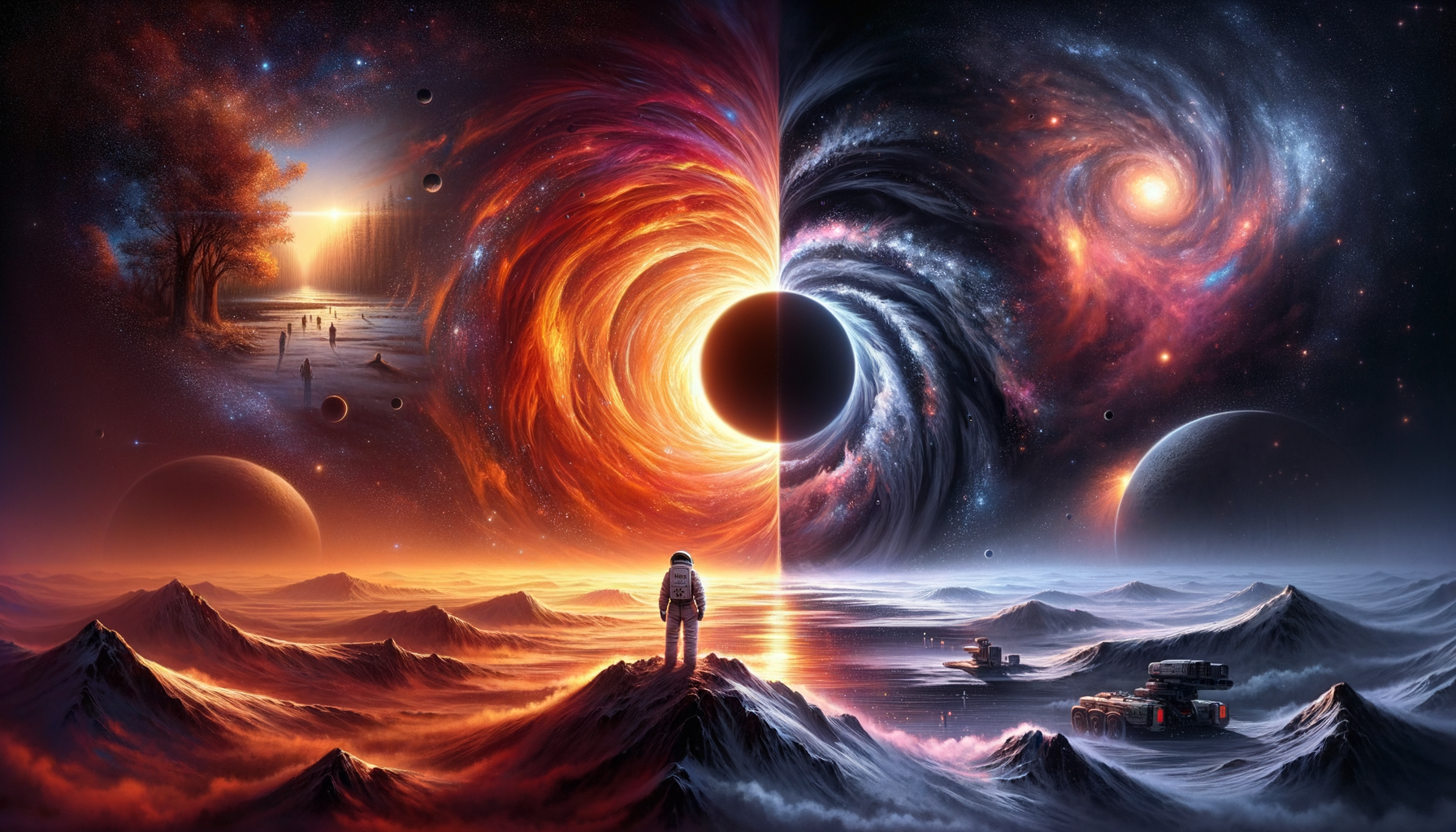“Interstellar” is renowned for its breathtaking visuals and Nolan’s meticulous direction, but few know it almost ventured into space with Steven Spielberg at the helm. Spielberg’s take promised a vastly different adventure, filled with wonder and classic sci-fi elements. Let’s explore these alternate realities of a film that could have been.
The Journey Begins: Spielberg’s Initial Vision
Imagine an “Interstellar” opening with a fiery cosmic event—a collision between a burning celestial body and a black hole—that set the stage for a sci-fi narrative full of awe and peril. Spielberg’s version of the script was to be an exploration of the unknown, anchored in a thrilling and expansive universe.
Spielberg intended to infuse moments of epic adventure into the story, including action-packed sequences such as a crew member commandeering a Chinese rocket to generate a gravitational anomaly. This scene was to be a showcase of bravery and quick-thinking, pushing the boundaries of space exploration as we know it.
Character Evolutions: Exploring Identity and Heroism
- Murphy’s Transformation: Originally conceptualized as a boy, Murph was a central figure in both versions. Spielberg’s Murph was to share a similar intellect and curiosity as seen in Nolan’s adaptation, yet the dynamics within the family context would shift significantly.
- Cooper’s Journey: While Nolan opted for a messianic depiction, Spielberg envisioned Cooper as the quintessential adventure hero. This classic hero archetype was critical in Spielberg’s storytelling, emphasizing individual heroism over predestined savior themes.
Character Comparison: Nolan vs. Spielberg
| Aspect | Nolan’s Version | Spielberg’s Version |
|---|---|---|
| Murphy’s Gender | Girl (Murph) | Boy (Murph) |
| Cooper’s Archetype | Messianic Figure | Adventure Hero |
| Brand’s Character | Obsessed with Love | Spiritually Driven |
Adventurous Exploration vs. Emotional Resonance
Spielberg’s “Interstellar” was set to be rich in exploration elements. One of the unique concepts was the creation of a jungle teeming with alien life beneath an icy planet—a direct nod to classic space opera settings. Such environments were meant to evoke the vast possibilities of the cosmos beyond Earth.
Brand, in this narrative, would have been portrayed as a more spiritually inclined explorer, driven by the quest itself rather than personal connections. Her evolving relationship with Cooper would capture a mature bond forged through shared experiences and challenges, deviating from the love arc seen in Nolan’s vision.
Plot Twists and Intriguing Divergences
- Alien and Technological Encounters: Spielberg’s narrative involved colossal plot developments, such as the discovery of Chinese automatons on extraterrestrial colonies, leading to intricate battles between human ingenuity and machine perfection.
- Time’s Ultimate Toll: Unlike Nolan’s emotionally charged timescale impacts, Spielberg’s crew discovered they were centuries into their future, amplifying the stakes when they realized they may be the last remnants of humanity.
Plot Element Comparison: Nolan vs. Spielberg
| Aspect | Nolan’s Version | Spielberg’s Version |
|---|---|---|
| Opening Scene | Dust Storm on Earth | Celestial Collision |
| Temporal Impact | Emotional Family Messages | Realization of Centuries Passed |
| Handling of Robots | Comic Sidekicks | Humanoid Machines |
Climactic Showdown and Future Revelation
Spielberg envisioned a climactic confrontation centered on a fifth-dimensional realm, offering viewers a mind-bending spectacle. In contrast to Nolan’s library-inspired finale, Spielberg’s script included a technological wonder—a massive spatial construct at the heart of multiple wormholes leading to galaxy-wide vistas.
This narrative concluded with Cooper returning to a cold, desolate future Earth, a poignant reminder of humanity’s plight through time. What was intended as a triumphant return became a solitary reflection on the passage of time and the endurance of the human spirit.
Final Thoughts: Two Titans, Two Tales
The contrasting approaches of Spielberg and Nolan highlight the power of diverse cinematic storytelling. Spielberg’s vision was set to be a nostalgic journey through sci-fi tropes, while Nolan’s film focused on emotional resonance and thematic depth. This exploration showcases the transformative potential of a single story under two master filmmakers.

